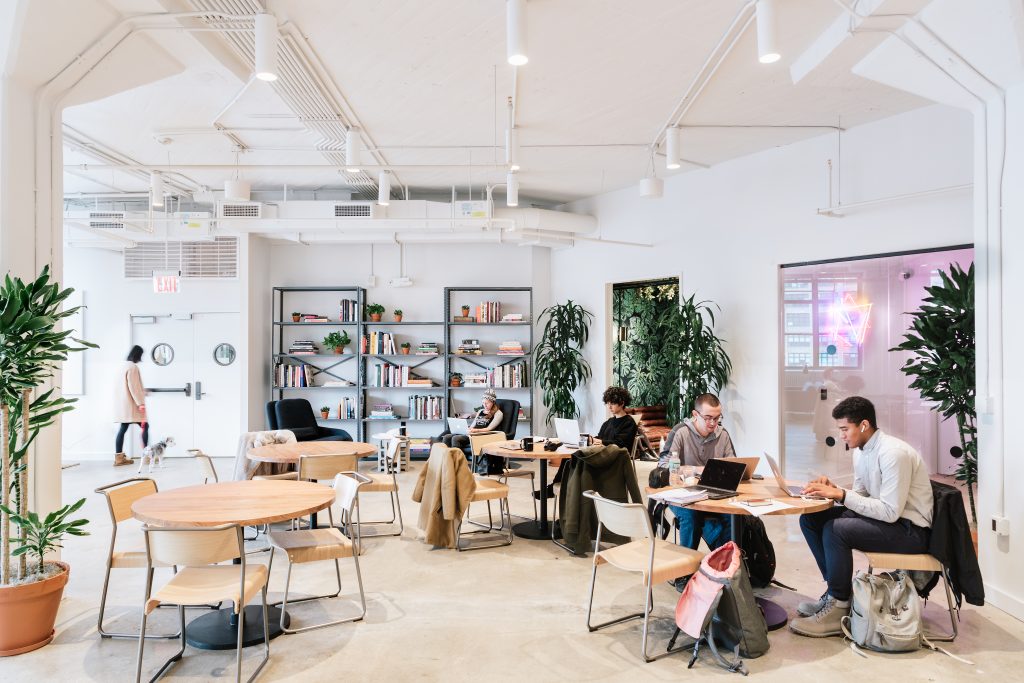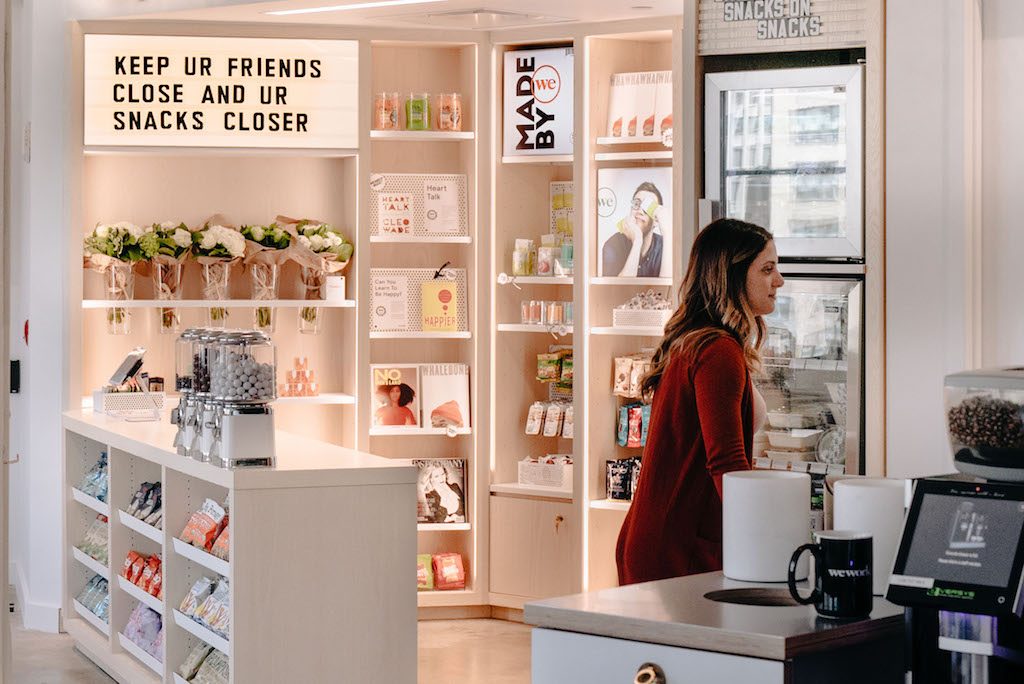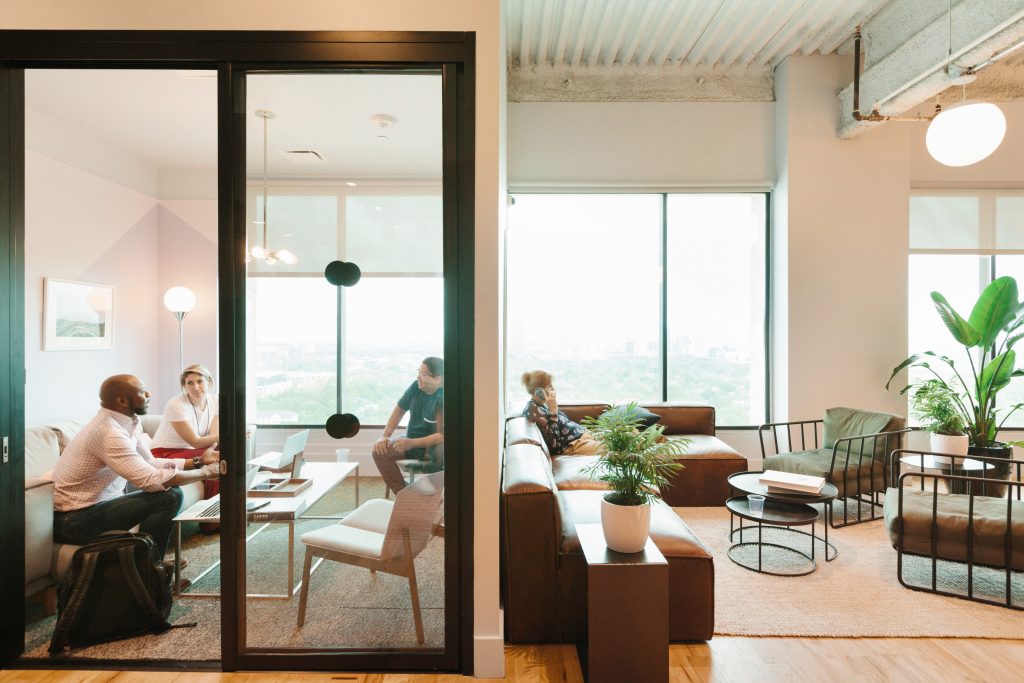HOW WEWORK PLANS TO TAKE ON RETAIL

WeWork is no longer wee. Launched a mere nine years ago, this New York-based global leader in shared, communal, aesthetically pleasing office space has worked out very well—and very quickly. In September 2018 it outpaced JPMorgan and became the largest private tenant of office space in Manhattan, where it now occupies more than 5.3 million square feet across 50-plus (and counting) locations. It also holds that title in Washington, D.C. Ditto in London, after landing in the British capital only four years ago.
WeWork now has 268,000 members in 287 sites worldwide and will soon be present in 87 cities spanning 23 countries. Like many a startup, the company is still operating at a loss, mostly because it continues to invest in further expansion. Its reported first-half revenues for 2018 were a robust $763 million but overall losses came to $723 million. Still, that hasn’t prevented investors, such as Japan’s SoftBank, its biggest one, from recently valuing it at $45 billion, making WeWork the second most valuable U.S. startup after Uber.
WeWork, whose chief creative officer happens to be former menswear designer darling Adam Kimmel, has also been making fashion-business headlines of late. In October 2017 it announced that it was acquiring the historic 676,000-square-foot Lord & Taylor Fifth Avenue flagship building from Hudson’s Bay for $850 million and that the storied department store would downsize its presence there to just three floors. A little over eight months later, Hudson’s Bay had a change of heart and decided it would exit the building entirely, leaving WeWork with 150,000 square feet of prime, empty real estate with which to play. But rather than simply turn it over to additional rentable office space, WeWork has decided to stick with the original plan of keeping it as retail space. “WeWork is preserving the basement, first and second floors for retail,” notes the company’s website. “During business hours, shoppers will once again walk through the iconic entryway, where the brass and bronze elements will be carefully restored.”

For now, WeWork is still very tight-lipped about exactly what—or even what kind of—tenant might occupy the floors. However, there’s a chance that the mystery retailer could be, well, itself, as WeWork has recently launched its own retail concept as part of its seemingly limitless diversification that now encompasses flexible living spaces (WeLive), a wellness club (RiseByWe), children’s schools (WeGrow), an app that encourages people with shared interests to socialize in real time (Meetup) and a technology training bootcamp (Flatiron School).
The new retail arm is named WeMrkt. It debuted at the company’s 205 Hudson Street location in Manhattan in June 2018 and has since extended to three more in the city. “WeMrkt is our first premium marketplace and it’s all about our members, featuring more member products including healthy snacks, office necessities, We branded apparel and more,” the corporate communications office explains. A panel of judges chooses the store’s revolving monthly selection at pitch nights wherein WeWork member companies present their products, which are assessed Shark Tank-style for creativity and innovation, capability (aka the sustainability of the business), impact and appearance/packaging. While most of the 10 monthly winners have included foodstuffs and other non-fashion items, the September 2018 WeMrkt did offer Blunt umbrellas and co-branded WeWork hoodies, T-shirts and trucker hats with Aviator Nation and tote bags with Utility Canvas. The plan is to expand the concept “both in the U.S. and internationally in the coming months.”
WeWork has also crossed paths with fashion by partnering with the women’s subscription rental clothing service Rent The Runway. The two announced in October 2018 that the former had installed drop-off boxes at 15 WeWork locations in six US cities—and that the program would most likely grow.

But even as it undergoes its own growth and evolution, the heart—or at least roots—of WeWork will always be its pioneering reinvention of the workplace that gives companies large or small the opportunity to rent an office by the month. It’s an offer that two of its longtime menswear-based tenants say has generally served them well.
“I love WeWork; we’ve been working out of a WeWork for four years,” says Jacob Wood, a former Macy’s buyer who launched Woodies Clothing, his online direct-to-consumer menswear collection of button-down shirts and chinos in 2014. Its headquarters are at WeWork’s 175 Varick Street building in New York. “Ultimately, I wanted a collaborative space, where I could meet new people, network with similar companies and have a physical space to meet new clients and host friends,” he adds.
Matteo Maniatty and Suwana Perry, co-owners of the contemporary wholesaled brand Descendant of Thieves, have rented space in the WeWork building in Manhattan’s Meatpacking District for six years. They tell a similar story. “I think it’s been beneficial because we’ve been able to network with people who are not in the business,” explains Perry. “We used an accountant on our floor and a lawyer on another. I think that makes you think out of the box because you deal with people you wouldn’t meet in a regular office because it’s a shared space.” Maniatty adds that they have used a fellow WeWorker graphic designer and architect they befriended in the building to help them design their newly opened standalone store on Bleecker Street and that, true to the communal spirit of the space, some of the work was done via barter. But not all their fellow tenants are as open to networking onsite and prefer to keep to themselves. “It’s what you put into it that you get out of it, in terms of being social,” says Maniatty.

The two also appreciate the flexibility that their month-to-month lease provides, which has allowed them to expand or shrink their required space depending on the size of their staff or the ever-changing business climate. Being able to set up a temporary camp in a WeWork building while traveling overseas is another huge perk, they add.
Of course, no workplace will ever be 100 percent ideal, including WeWork. “I think the negative is that being there makes your brand look a little smaller and gives the appearance that you are more of a startup,” notes Maniatty. This is precisely why he’s now conducting all sales appointments at the store, where he can better express his brand’s story and aesthetic vision.
Wood concurs: “As we grow a little too big for WeWork, I’d love to have a standalone office space/showroom where we can brand everything and make the space our own. Maybe by the time we’re ready for the upgrade, WeWork will have a retail space offering that will cater to my needs.”
Maybe—and most likely—this ever-growing trailblazer will.








